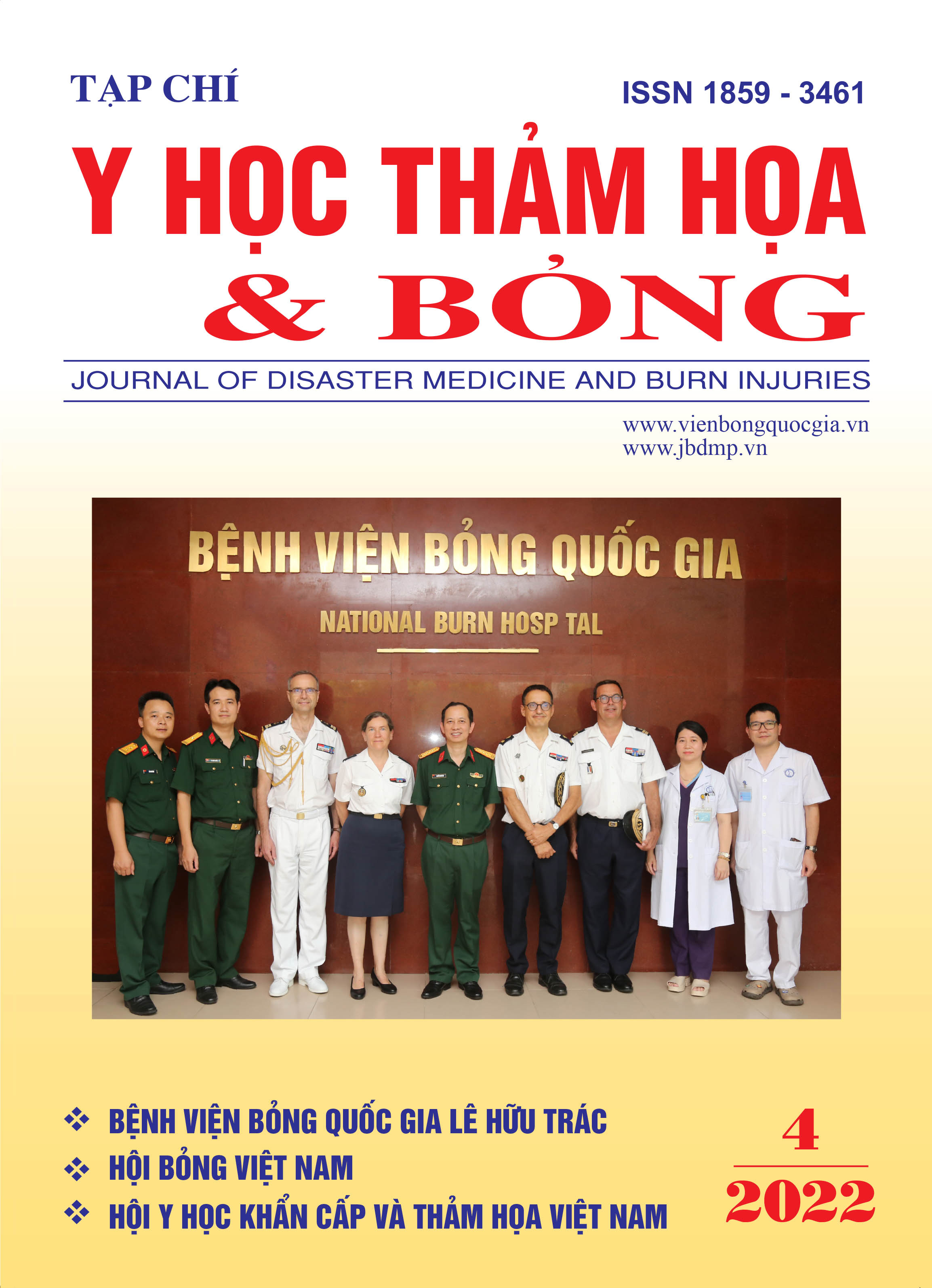Pre-expanded supraclavicular flap for reconstruction of neck contractures
Main Article Content
Abstract
The prevalence of neck burn scars was 10 - 15% among regions involved with burns sequelae. A neck scar contracture can severely and negatively affect the neck function, limit the ability to work as well as affect the mentality. Supraclavicular artery flap has many defining advantages of neck burn scar reconstruction, which are good cosmetic (its thinness and pliability, color and texture match).
To reconstruct large defects after excising post-burn neck scars, many types of research have been conducted to expand the dimension of the supraclavicular flap such as supercharging at the distal part of the flap, combining the tissue expansion technique with the supraclavicular flap. Pre-expanded supraclavicular flap is a thin flap with good cosmetic and functional outcomes, single-stage primary closure of the flap donor site without the need for microsurgery.
In this article, we report the results of the application pre-expanded supraclavicular flap in 7 patients with neck scar contracture, in order to expand the dimension of the flap and enhance the esthetic outcome in the donor site.
Article Details
Keywords
Supraclavicular flap, neck scar contracture
References
1. Thanh Hải, T., Quang Vinh, V. ., & Vân Anh, T. (2021). Ứng dụng vạt da cân thượng đòn có nối mạch vi phẫu tại đầu xa trong tạo hình sẹo di chứng bỏng vùng cổ. Tạp Chí Y học Việt Nam. Tập 501 Số 2.
2. Vinh, V.Q., et al. (2009), Anatomical and clinical studies of the supraclavicular flap: analysis of 103 flaps used to reconstruct neck scar contractures. Plastic and reconstructive surgery. 123(5): p. 1471-1480.
3. Pallua, N. and E.M. Noah. (2000), The tunneled supraclavicular island flap: an optimized technique for head and neck reconstruction. Plastic and reconstructive surgery. 105(3): p. 842-851.
4. Anh, T.V. (2005), Nghiên cứu lâm sàng và điều trị sẹo di chứng bỏng vùng cằm cổ, in Luận án Tiến sỹ Y học. Học viện Quân Y, Hà Nội. p. 61-73.
5. S. Atallah, A. Guth, F. Chabolle, C.-A. Bach (2015) nnales françaises d'Oto-rhino-laryngologie et de Pathologie Cervico-faciale, Volume 132, Issue 5, Pages 269-272
6. Cormack, G. and G. Lamberty (1986), Cadaver studies of correlation between vessel size and anatomical territory of cutaneous supply. British journal of plastic surgery. 39(3): p. 300-306.


